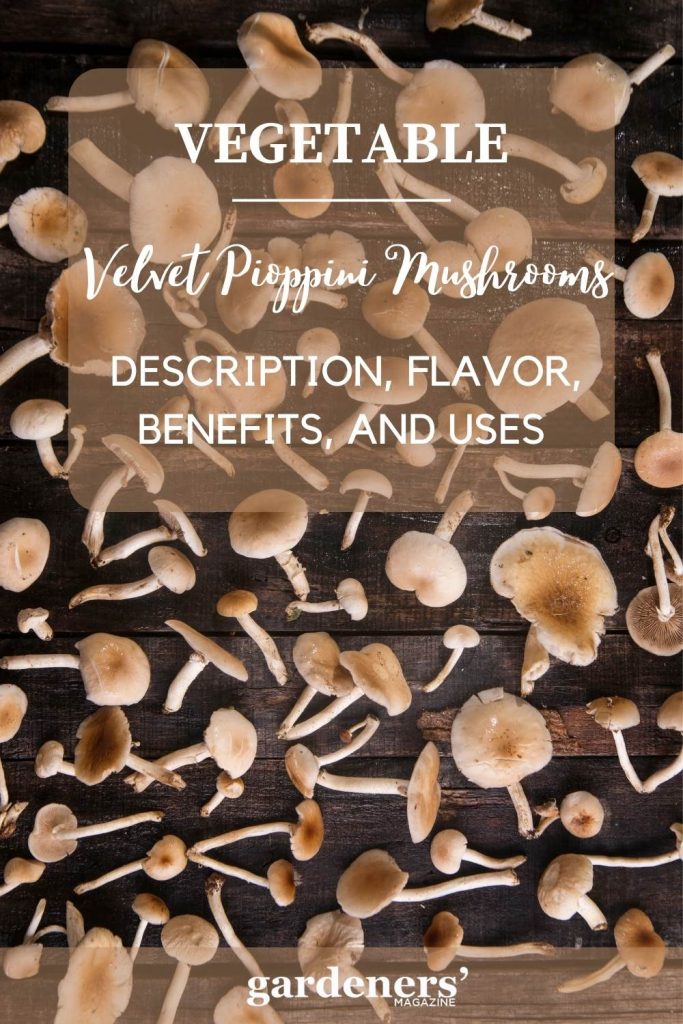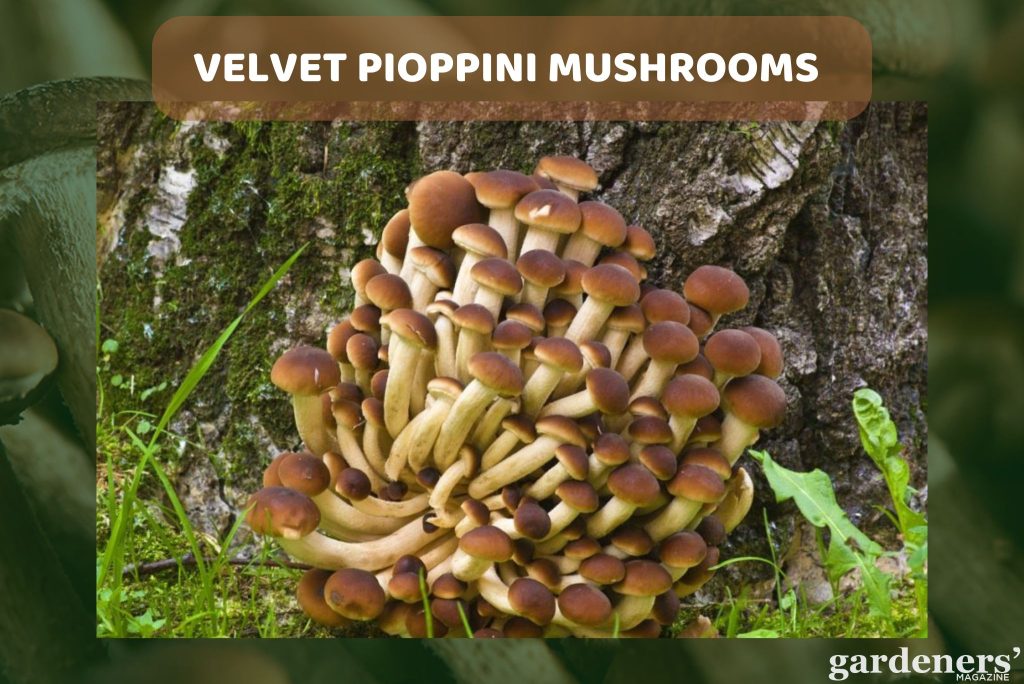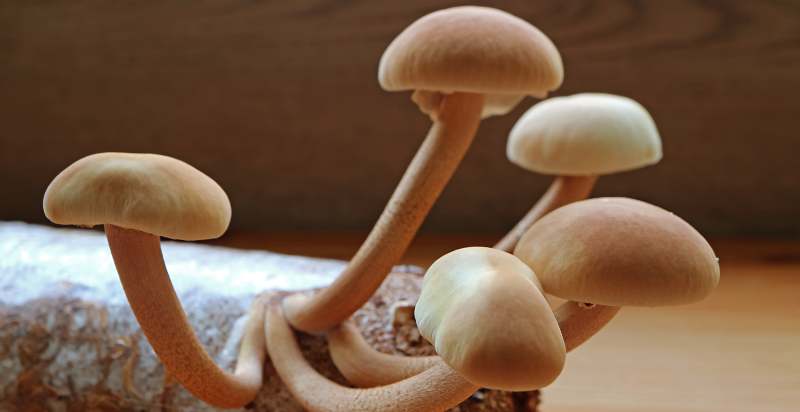As a gardener with a passion for the unique and nutritious, I’m thrilled to introduce you to the delightful world of Velvet Pioppini mushrooms. These culinary gems, with their rich, nutty flavor and meaty texture, are a dream come true for anyone looking to add a gourmet touch to their home-cooked meals. Native to the Mediterranean region, Velvet Pioppinis are not only a joy to cook with but also a fascinating addition to any gardener’s repertoire, offering a bounty of health benefits and a touch of elegance to your dishes.
Whether you’re a seasoned mushroom enthusiast or just beginning to explore the vast kingdom of fungi, Velvet Pioppinis are sure to captivate your taste buds and gardening spirit alike. Let’s dive into the earthy, flavorful world of these exquisite mushrooms and discover how they can transform your culinary creations and gardening adventures.
What are Velvet Pioppini Mushrooms?
Velvet Pioppini mushrooms, scientifically known as Agrocybe aegerita, are a prized variety of edible fungi, cherished for their distinctive taste and texture. Often referred to as Black Poplar mushrooms or simply Pioppini, they belong to a group that thrives in harmony with the roots of hardwood trees, especially poplars and cottonwoods. Originating from the Mediterranean region, these mushrooms have garnered popularity across the globe, particularly in Italian cuisine, where they are celebrated for their rich, earthy flavor and firm, meaty texture.
Characterized by their small to medium-sized, velvety brown caps and elongated, creamy stems, Velvet Pioppinis offer a unique culinary experience. Their flavor profile is a delightful blend of nutty and slightly peppery notes, with a hint of sweetness that makes them a versatile ingredient in a wide array of dishes. From stir-fries and soups to risottos and pasta dishes, Velvet Pioppini mushrooms add depth and complexity to recipes, enhancing the overall taste with their umami-rich presence.
Beyond their culinary appeal, Velvet Pioppini mushrooms are also valued for their nutritional benefits. They are a good source of protein, fiber, vitamins, and minerals, contributing to a healthy diet while offering a gourmet ingredient for food enthusiasts and chefs alike. Whether you’re a gardener interested in growing these mushrooms or a cook eager to incorporate them into your meals, Velvet Pioppinis provide a delightful and enriching experience both in the garden and on the plate.

History and Origin of Velvet Pioppini Mushrooms
The Velvet Pioppini mushroom, scientifically known as Agrocybe aegerita, boasts a rich history and origin deeply rooted in Mediterranean culture, particularly in Italy, where it has been cultivated and savored for centuries. This mushroom is commonly found growing in the wild on dead or decaying wood of hardwood trees, especially poplars and cottonwoods, which is how it earned one of its other popular names, the Black Poplar mushroom. Its affinity for these trees is also reflected in its various names across different cultures, highlighting its widespread appreciation and cultivation.
The first documented cultivation of Velvet Pioppini mushrooms dates back to the early 18th century in Europe, where they were grown for their distinctive taste and nutritional value. However, it’s believed that their use in traditional cuisines predates this period, given their availability in the wild and the longstanding culinary traditions of the regions where they naturally occur.
As global interest in gourmet mushrooms and sustainable agriculture has grown, so too has the popularity of the Velvet Pioppini mushroom. Today, it is cultivated in many parts of the world, including North America, Asia, and Australia, where it is appreciated not only for its rich, earthy flavor and meaty texture but also for its health benefits. The mushroom’s ability to grow in clusters on substrates like sawdust and straw has made it a favorite among small-scale and hobbyist mushroom farmers, further spreading its culinary and nutritional benefits to a wider audience.
Description of Velvet Pioppini Mushrooms
Velvet Pioppini mushrooms have a distinctive look that sets them apart from other mushroom varieties. They feature small to medium-sized caps that range from 2 to 5 cm in diameter, with a convex shape that flattens with age. The caps are velvety to the touch, hence the name, and exhibit a rich, dark brown color that lightens towards the edges. The stems are long, slender, and cream-colored, providing a striking contrast to the dark caps. As the mushrooms mature, the gills underneath the cap turn from a light color to a darker brown, indicative of their spore color.
Velvet Pioppini mushrooms are a remarkable variety that offers a unique combination of taste, texture, and nutritional benefits. Their distinctive appearance and culinary versatility make them a cherished ingredient in kitchens around the world, adding depth and flavor to a wide array of dishes.
Flavor Profile of Velvet Pioppini Mushrooms
Velvet Pioppini mushroom is celebrated for its rich, earthy flavor that carries hints of nuttiness and a subtle peppery undertone. This complex flavor profile makes it a versatile ingredient that enhances the taste of various dishes. The texture is another hallmark of this mushroom; the caps are tender yet meaty, while the stems offer a pleasant chewiness. When cooked, Velvet Pioppinis maintain their firm texture, making them an excellent addition to dishes where they can stand out, such as risottos, pasta, stir-fries, and soups.
When cooked, the mushrooms become juicy and tender with a slight crunch. They pair well with vegetables such as spinach, bell peppers and herbs like rosemary and thyme. Velvet Pioppini mushrooms can be combined with garlic, butter, and white wine for an added flavor layer. They are also a great addition to pasta dishes and risotto.

Seasonality and Availability Throughout the Year of Velvet Pioppini Mushrooms
In their natural habitats, primarily in the Mediterranean region and parts of Asia, Velvet Pioppini mushrooms typically grow in the cooler months of late fall through to early spring. The exact timing can vary based on specific regional climates and weather conditions in a given year. These mushrooms thrive in the cooler, moist conditions of these seasons, growing on the decaying wood of hardwood trees, especially poplars and cottonwoods.
The availability of Velvet Pioppini mushrooms can also vary by geographic location. In regions closer to their natural habitat, such as parts of Europe and Asia, wild-harvested Velvet Pioppinis may be more commonly found. In contrast, in North America and other areas where they are not native, cultivated Velvet Pioppinis are more likely to be the primary source available to consumers.
The peak season for Velvet Pioppini mushrooms is October through December. They tend to be more abundant and much less expensive during this time. They can also be found in spring and summer, but usually at a higher price.
Thanks to modern cultivation techniques, Velvet Pioppini mushrooms can be grown year-round in controlled environments. Mushroom farmers use indoor growing facilities where temperature, humidity, and other conditions are carefully managed to mimic the natural growing conditions of these fungi. This controlled cultivation allows for a consistent supply of Pioppinis throughout the year, making them available to consumers regardless of the season.
Health Benefits of Velvet Pioppini Mushrooms
Incorporating Velvet Pioppini mushrooms into your diet can offer significant benefits for both your physical well-being and mental health. Rich in antioxidants, these mushrooms play a crucial role in reducing inflammation and safeguarding the body against the damaging effects of free radicals. Their high protein content is essential for the growth and maintenance of muscle tissue. Furthermore, these mushrooms are packed with vital minerals like iron, zinc, and selenium, all of which are crucial for maintaining a robust immune system.
These mushrooms also possess natural compounds that have been found to lower stress levels and enhance mood, making them a beneficial food for mental health. They are a fantastic source of dietary fiber, supporting digestive health and regularity. Moreover, the abundance of Vitamin D in Velvet Pioppini mushrooms aids in the regulation of calcium absorption, which is vital for the development and maintenance of strong bones and teeth.
Cultivation of the Velvet Pioppini Mushrooms
Velvet Pioppini mushrooms favor a range of growing mediums, finding particular success in hardwood sawdust, which closely replicates their natural environment of decaying hardwood trees. Enhancing this base with additives like wheat bran not only boosts growth but also supplies essential nutrients needed for the mushrooms’ development.
To ensure successful cultivation, the selected medium must undergo thorough preparation and sterilization to remove any harmful contaminants. This involves dampening the medium and applying heat through methods such as autoclaving or pasteurization, a step vital for preventing the invasion of bacteria or mold.
After the medium cools down, it is then inoculated with Velvet Pioppini mushroom spores. This crucial phase involves embedding the mushroom mycelium into the medium, setting the stage for its eventual mushroom production. It’s imperative to uphold a sterile environment during this process to sidestep any risk of contamination.
Following inoculation, the medium is transferred to a controlled incubation space, where specific temperature and humidity levels are maintained to support mycelial expansion. Velvet Pioppini mushrooms exhibit optimal growth in temperatures ranging from 20-24°C (68-75°F), with a preference for dimly lit or dark conditions to promote colonization.
Once the mycelium has thoroughly permeated the medium, the environment is tweaked to trigger the fruiting phase. This adjustment typically includes the introduction of fresh air, a decrease in temperature to about 15-18°C (59-64°F), and a rise in humidity to approximately 90-95%. These changes emulate the mushrooms’ natural cues for starting the fruiting process.
Harvesting of the Velvet Pioppini Mushrooms
Velvet Pioppini mushrooms typically start to fruit within a few weeks of initiating the fruiting conditions. Mushrooms are harvested by twisting and pulling them from the substrate when they reach the desired size, usually just before or as the veil beneath the cap begins to tear.
After the first harvest, additional flushes of mushrooms can often be encouraged by maintaining the fruiting conditions and ensuring the substrate remains moist. Subsequent flushes may produce fewer mushrooms, but with proper care, multiple crops can be harvested from a single inoculation.
Cultivating Velvet Pioppini mushrooms can be a rewarding experience, offering the grower not only the pleasure of watching these exquisite mushrooms develop but also the opportunity to enjoy their delicious taste. With patience and attention to detail, growers can successfully produce these gourmet mushrooms at home or on a commercial scale.

Where do Velvet Pioppini Mushrooms Grow region-wise?
They are native to Europe and have been introduced elsewhere. In North America, velvet pioppini mushrooms are found in California, Oregon, Washington State, British Columbia, and Alberta. They can be found outside North America in the UK, Germany, Spain and Portugal. In Australia, they grow in New South Wales and Victoria.
Mushroom hunters often look for velvet pioppinis in woodlands, grasslands, and open fields. They grow in clusters on dead or dying trees like willows, birches, and poplars. The mushrooms can also grow on decaying logs or stumps of hardwood trees such as oaks, maples, and ash. These mushrooms prefer to grow in summer and autumn, although they can be found in some areas as late as winter.
What are the Things to Remember When Buying Velvet Pioppini Mushrooms?
When buying Velvet Pioppini mushrooms, there are a few things to keep in mind:
- Look for firm, dry caps with tight gills and no visible bruising or discoloration.
- Avoid mushrooms that have an unpleasant smell or have any signs of rot.
- If purchasing pre-packaged mushrooms, check the packaging to ensure it is sealed properly and has no holes or tears.
- Buy mushrooms from reputable sources and inspect them for any signs of spoilage before using them.

What is the Best Way to Store Velvet Pioppini Mushrooms?
- Opt for Paper Bags: Encase your Velvet Pioppini mushrooms in a paper bag rather than a plastic one. The paper facilitates air circulation, warding off the accumulation of moisture that could otherwise spoil the mushrooms. Keep the bag loosely sealed and refrigerate it. This approach effectively simulates the mushrooms’ preferred airy and natural habitat, minimizing the likelihood of them turning slimy or moldy.
- Proper Refrigeration Techniques: Position the paper-bagged mushrooms in the fridge, preferably within the central compartment where temperatures remain stable and moderately cool. Velvet Pioppini mushrooms are best kept at a temperature range of 2-4°C (35-39°F). Steer clear of the fridge’s coldest zones, like the back, to prevent freezing, as well as the crisper drawer, which could lead to excess humidity.
- Pre-Storage Cleaning Precautions: Refrain from washing the mushrooms prior to storage to avoid premature spoilage due to moisture. If necessary, lightly brush them off with a dry brush or wipe them with a damp cloth right before usage. This precaution keeps them dry and less susceptible to mold development.
- Strategies for Extended Storage: For those looking to keep them over an extended period, drying is a viable option. Once dried, these mushrooms can be preserved for several months and rehydrated with water when needed. Lay the mushrooms out in a single layer on a baking sheet and dry them in an oven set to its lowest temperature, leaving the door ajar, or utilize a food dehydrator if available.
How can Velvet Pioppini Mushrooms be Used in Recipes with Other Fruits and Vegetables?
Velvet Pioppini mushrooms are incredibly versatile and can be used in various recipes featuring other fruits and vegetables. For example, they can add an earthy flavor to salads with apples, pears, carrots, and greens. They also make a delicious stir-fry with bell peppers, snap peas, onions, and garlic. Additionally, they can be a key ingredient in risotto dishes, adding a unique texture and flavor. Whether served as a side or part of an entrée, these mushrooms make a great addition to any recipe. These mushrooms are sure to impress with their mild taste and meaty texture.

Conclusion
Velvet Pioppini mushrooms are an excellent addition to any kitchen. Whether you’re looking for a unique ingredient to add to your favorite recipes or want to try something new, these mushrooms are sure to make a delicious dish. With their mild flavor and meaty texture, these mushrooms can easily be incorporated into salads, stir-fries, risotto, and more. And because they pair well with other mushrooms, they can add flavor to any dish. So don’t hesitate to try Pioppini mushrooms for your next meal – you won’t be disappointed!
- Everything You Wanted to Know About Red Tamarillos - June 2, 2025
- A Guide to Tulips: Everything You Need to Know & More… - June 2, 2025
- Guanabana: Description, Flavor, Benefits, And Uses - May 27, 2025

6 thoughts on “Velvet Pioppini Mushrooms: Benefits, Nutritions, and Uses”
Comments are closed.